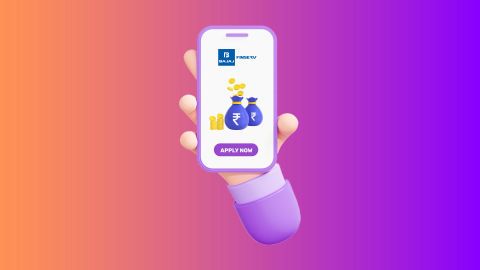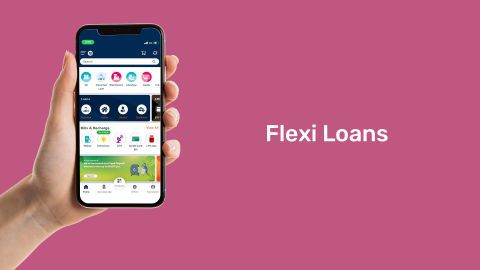Loans are the best ways to finance your immediate and unexpected needs. And generally, you have two primary categories to choose from when looking for immediate financing: secured debt and unsecured debt. The main distinction between the two is whether there is any collateral to safeguard the lender if the borrower defaults.
In addition, many factors including loan amount, loan tenure, and more, are influenced by whether the loan is secured or unsecured. Needless to say, all the above-mentioned factors have a huge effect on the total cost of your loan.
Now that we are aware of the fundamentals, let us explore secured debt vs unsecured debt in more detail.
What is secured debt?
As the term rightly suggests, debt that is secured by assets (like property, gold, etc.) is known as secured debt. An asset that the borrower provides as a guarantee of the loan is known as collateral. Lenders have the right to take possession of that collateral to recover their losses if a borrower defaults on a loan. Mortgages, car loans, and secured credit cards are a few examples of secured debt.
The key benefit of secured debt is that its interest rates are often lower than those of unsecured debt. This is because the collateral provides the lender with additional security and lowers their risk. Secured loans could also be simpler to get because the collateral acts as a guarantee of repayment.
Secured debt example
A common example of secured debt is a mortgage loan. When individuals or businesses borrow money to purchase real estate, such as a house or commercial property, they often offer the property as collateral to secure the loan. The lender places a lien on the property, giving it the right to seize and sell it if the borrower fails to repay the loan. This provides a level of security for the lender, reducing the risk associated with the loan. In case of default, the lender can recover the outstanding debt by selling the property through a legal process, ensuring a measure of protection for their investment.
What is unsecured debt?
Unsecured debt refers to funds borrowed without any collateral. These loans often come with higher rate of interest as compared to secured loans due to the absence of a safety for the lender in the form of a collateral. Here the lender considers borrower's creditworthiness and his ability to repay while offering an unsecured loan. This often entails looking into a borrower's past debt and repayment history, CIBIL Score and bank statements. To determine if the borrower will have sufficient funds for loan payments, lenders may additionally consider the borrower's income.
Credit cards, personal loans, and education loans are only a few types of unsecured debt.
Unsecured debt example
An example of unsecured debt in India is a personal loan. Unlike secured loans that require collateral, personal loans are granted based on the borrower's creditworthiness and financial history. Individuals can obtain unsecured personal loans for various purposes without pledging any assets as security. Since there's no collateral involved, lenders rely heavily on the borrower's credit score and income stability to determine loan eligibility. In the absence of collateral, unsecured debt poses a higher risk for lenders, often resulting in comparatively higher interest rates to compensate for the increased uncertainty.
Secured or unsecured debt: Which one is better?
There are a few factors to consider when comparing secured and unsecured debt:
- Colateral
Collateral is the primary distinction between secured and unsecured debt. Secured debt is backed by collateral, which is an asset put up as security for the loan by the borrower. Anything of value, such as a home, car, gold or other significant assets, might serve as collateral. The lender has the right to take possession of the collateral to recover the losses in the event that the borrower defaults on the loan.
On the other hand, there is no need for collateral for unsecured debt. Instead, when establishing eligibility for an unsecured loan, the borrower's creditworthiness is the prime concern. In fact, given the nature of unsecured loans, its eligibility parameters may be marginally stricter than a secured loan. - Rate of interest
Secured debt carries a lower risk for the lender. With unsecured debt, the lender has no recourse and must rely exclusively on the borrower's ability to repay the loan.
The value of the collateral is frequently considered when determining the interest rate for secured loans, with higher-value collateral typically resulting in relatively lower interest rates. In contrast, the interest rate on an unsecured loan is typically determined by the borrower's credit score, with better scores resulting in lower rates. - Eligibility criteria
As secured debt is backed by collateral, eligibility criteria are simple, and lenders may be more inclined to issue loans to borrowers with lower credit ratings. However, the available credit could be restricted by the collateral's value.
The eligibility criteria are often stricter for unsecured debt. Lenders will evaluate eligibility based on the borrower's credit score, income, and other financial factors. Unsecured loan applications are more likely to be granted to borrowers with higher credit scores and lower debt burdens. - Repayment tenure
Secured and unsecured loans have different terms for repayment. The payback time for secured debt may be longer, often spanning many years. Due to the increased security provided by the collateral, the lender may be more prepared to grant a loan with a longer duration.
Unsecured debt, on the other hand, typically has shorter payback periods, which range from a month to a few years. This is because the lender possesses no collateral and may wish to limit their risk exposure.
When taking out a loan, it is critical to comprehend the distinction between unsecured and secured debt. You may make smarter financial decisions and stand a greater chance of attaining your financial objectives by being aware of how they differ and the benefits and drawbacks of each.
Bajaj Finserv Personal Loans are a great illustration of unsecured debt. This loan does not require collateral, and customers can borrow up to Rs. 55 lakh with flexible tenures ranging from 12 months to 96 months.




